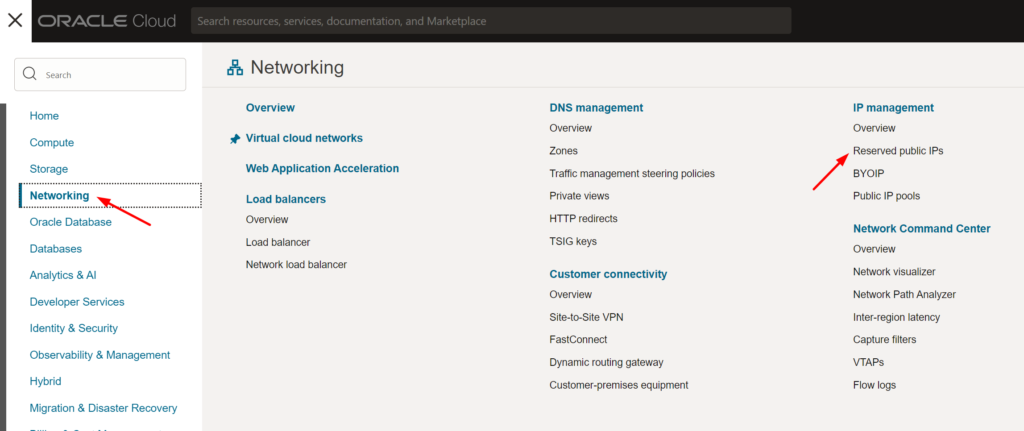This is the series of articles about how to setup free own mailserver on OCI.
- Free Mail Server on OCI – Oracle Cloud Account
- Free Mail Server on OCI – Your Domain Name
- Free Mail Server on OCI – IPv4 Address, PTR
- Free Mail Server on OCI – Data Block Volume
- Free Mail Server on OCI – Virtual Cloud Network
- Free Mail Server on OCI – Compute Instance
- Free Mail Server on OCI – Swapfile
- Free Mail Server on OCI – OCFS2
- Free Mail Server on OCI – Docker, Cron, Certbot
- Free Mail Server on OCI – Docker-Mailserver
How to create Oracle Cloud Account and basic setup you can find in this article.
How to link your Domain Name to OCI you can find in this article.
Reserved Public IPv4
Once your account is created and confirmed, whether you stay in Free Tier or Paid account, you should be able to create resources you need. Let’s start from the Reserved Public IPv4.
Why we need Reserved public IP address? – you may ask, I will answer – to be able to permanently set that IP address in the DNS A records of our Domain Name and do not worry about the dynamic IP address change. Although the Public IP address is normally linked to the OCI’s VM instance and won’t change on VM restart, however I would prefer to know that I have a dedicated IP address, and even if I kill the VM instance and create a new one – I still be able to reuse my reserved, the same, IP address, and not the new one (Ephemeral) provided by OCI.
If you don’t want to use the reserved IP address, you still be able to use the Ephemeral IP address, but when it changes you need to either manually or programmatically change the DNS A record of your Domain Name, not a big deal though, you can use a bash script for that, some example you can find in my other article (Startup Scripts).
Log in to your OCI Console, go to Networking -> IP management -> Reserved public IPs:

Click on Reserved public IP address button, name your Ip address and click on Reserve public IP address button at the bottom:

Once the IP address is reserved you should see it in the list of your reserved public IPv4 IP addresses.
Reverse DNS, rDNS or PTR Record
Create a support request in Oracle Cloud Account (under Governance & Administration -> Support) for PTR record for your mail server domain (mail.mymail.com as an example) and your public IPv4 address, more details you can find here.
Let’s create Data Block Volume for our Mail Server, follow this article.


Leave a Reply
You must be logged in to post a comment.